Download PDF
Download page HEC-ResSim Training for Panama Canal Authority.
HEC-ResSim Training for Panama Canal Authority
By: Evan Heisman, P.E.
South Atlantic Division's (SAD) Latin America Programs requested training in HEC-ResSim (Hydrologic Engineering Center's Reservoir Systems Simulation) to support ongoing studies being performed by the Autoridad del Canal de Panamá (ACP, Panama Canal Authority). Evan Heisman and Joan Klipsch from HEC's Water Resource Systems Division, along with David Bogema (SAM) and Josh Melliger (NWO) traveled to Panama in late January 2023 to provide a week long course tailored to topics relevant to the Panama Canal system. Class attendees included 16 engineers, meteorologists, limnologists, and planners from ACP (Figure 1).
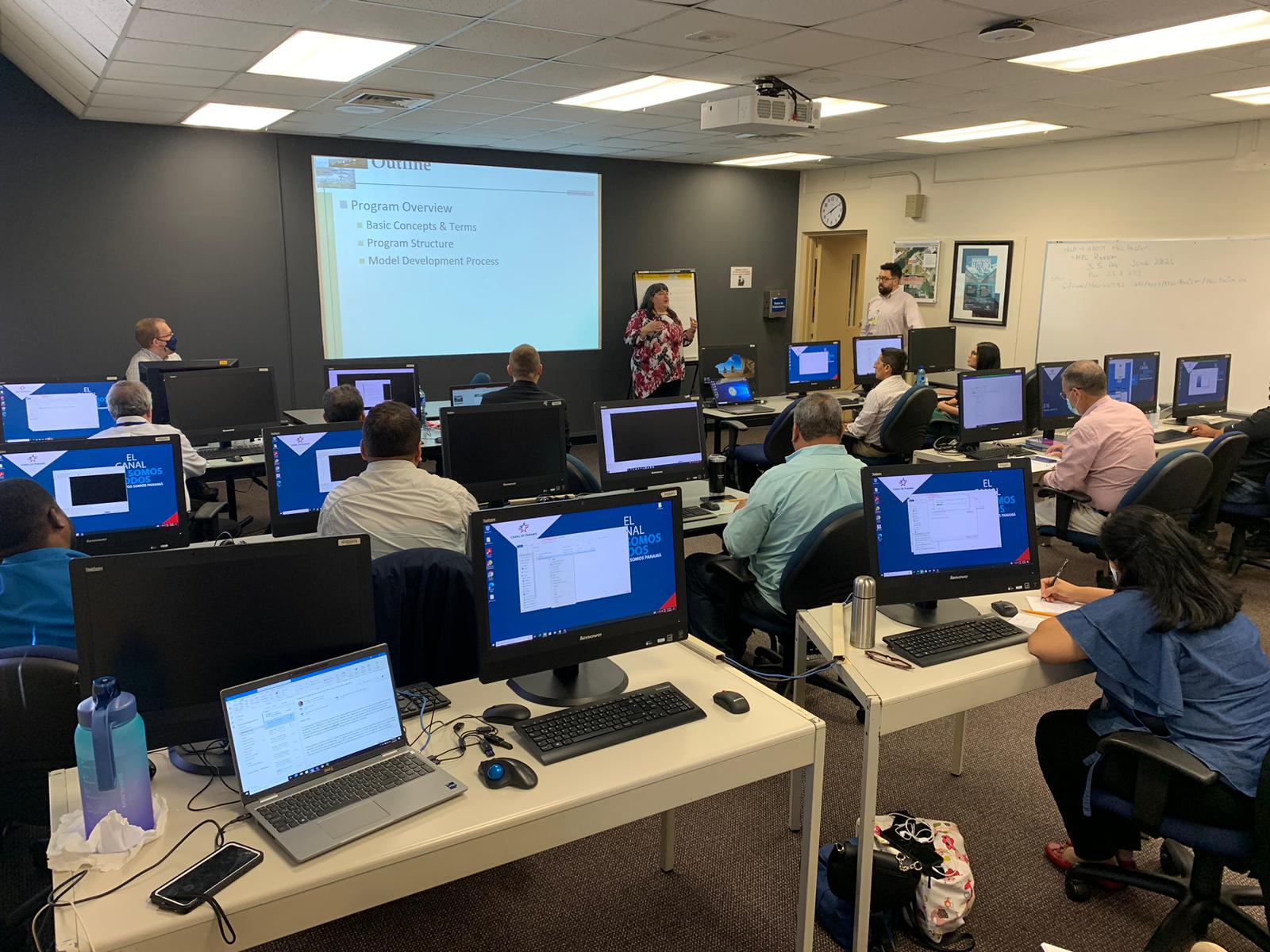
The canal system (Figure 2) is made up of two reservoirs: 1) Lake Gatun, the lake through which ships pass as they transit the canal, which also provides municipal water supply to Panama City, and 2) Lake Alhajuela behind Madden Dam, an upstream storage project used to reserve water for Lake Gatun. USACE is supporting ACP in the initial phases of a feasibility study looking at possible modifications to the system that would help meet navigation and municipal water supply needs under future conditions. The ACP is concerned about uncertainty related to climate change, increased municipal water supply demands, and increased traffic, which will increase water lost from the system through lockages and can increase salinity in the lake. As part of the support provided by SAD's Latin America Programs, led by Calvin Creech, David Bogema and Joshua Melliger are working with ACP to develop an HEC-ResSim model to evaluate the impacts of several proposed alternatives, including changes in reservoir operations, diversions from other basins, and construction of segmentation reservoirs within Lake Gatun.
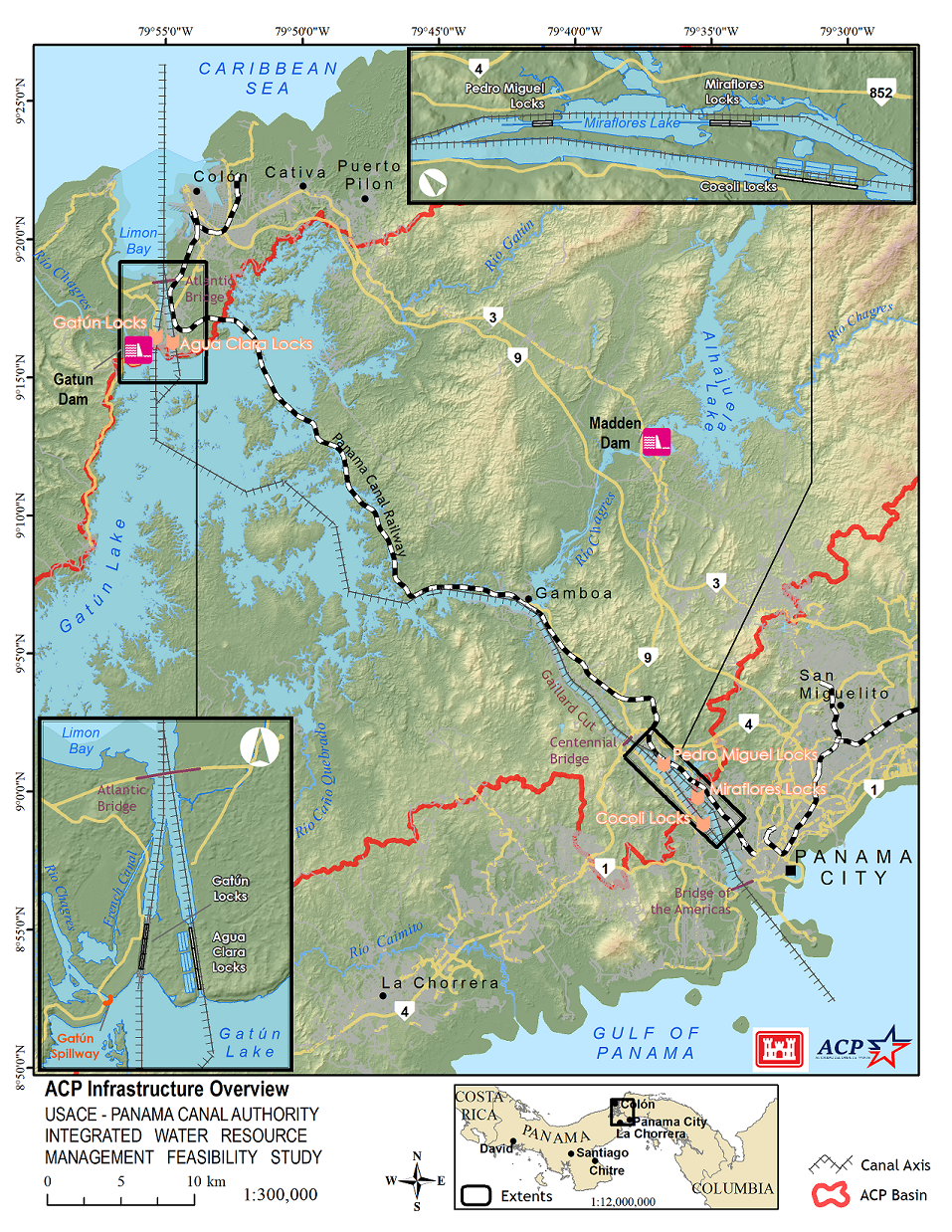
The course material was an adapted version of the PROSPECT #098 Reservoir Operations Modeling with HEC-ResSim course, dropping a few modules that were not relevant to the Canal to make space for additional material on scripting in HEC-ResSim. Additional material covered the advanced compute types and the water quality module being developed for HEC-ResSim 4.0. The water quality module presentation was facilitated as a hybrid lecture, with Leila Ostadrahimi from HEC and Todd Steissberg from ERDC (Engineer Research and Development Center) remotely presenting fundamentals of water quality modeling and demonstrating how it is configured in HEC-ResSim.
As part of the advanced features discussion, the instructional team demonstrated the ensemble compute type, which provides the ability to regulate an ensemble of streamflow inputs in a single run. By the following day, the ACP team applied the ensemble compute type in their current HEC-ResSim model to make their workflow for near-term forecasting more efficient; this had previously been a time-consuming process that required running ensemble members one at a time. Evan Heisman and David Bogema (Figure 3), reviewing components of the Panama Canal HEC-ResSim model with the class.
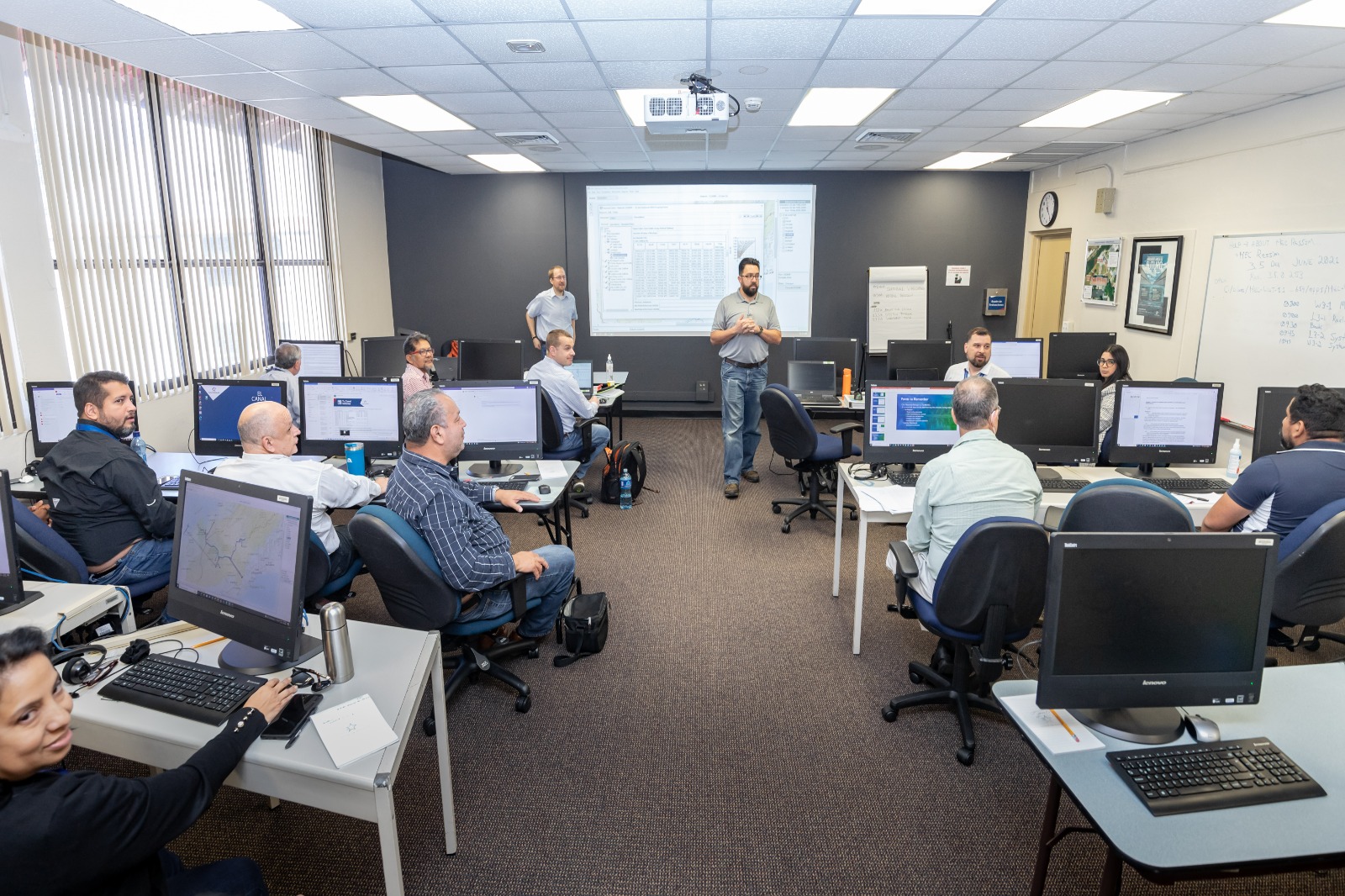
At the end of each day, the instructional team scheduled a block of time to review the concepts taught with the model being delivered to ACP by USACE for the feasibility study, giving them an opportunity to see how the material covered can be directly applied. This review also allowed for very interesting conversations about the challenges of operating the Panama Canal and modeling the system, and gave the instructors several ideas for improvements in HEC-ResSim that will support both ACP and other modeler's needs. As instructors participating in these discussions, Joan and Evan came away with a new appreciation for the complexities of the Panama Canal system. The class (Figure 4) was well received by the ACP and their team leadership expressed sincere appreciation for helping to bring them up to speed on the software, allowing the engineers from ACP to better use the model being developed for the feasibility study.
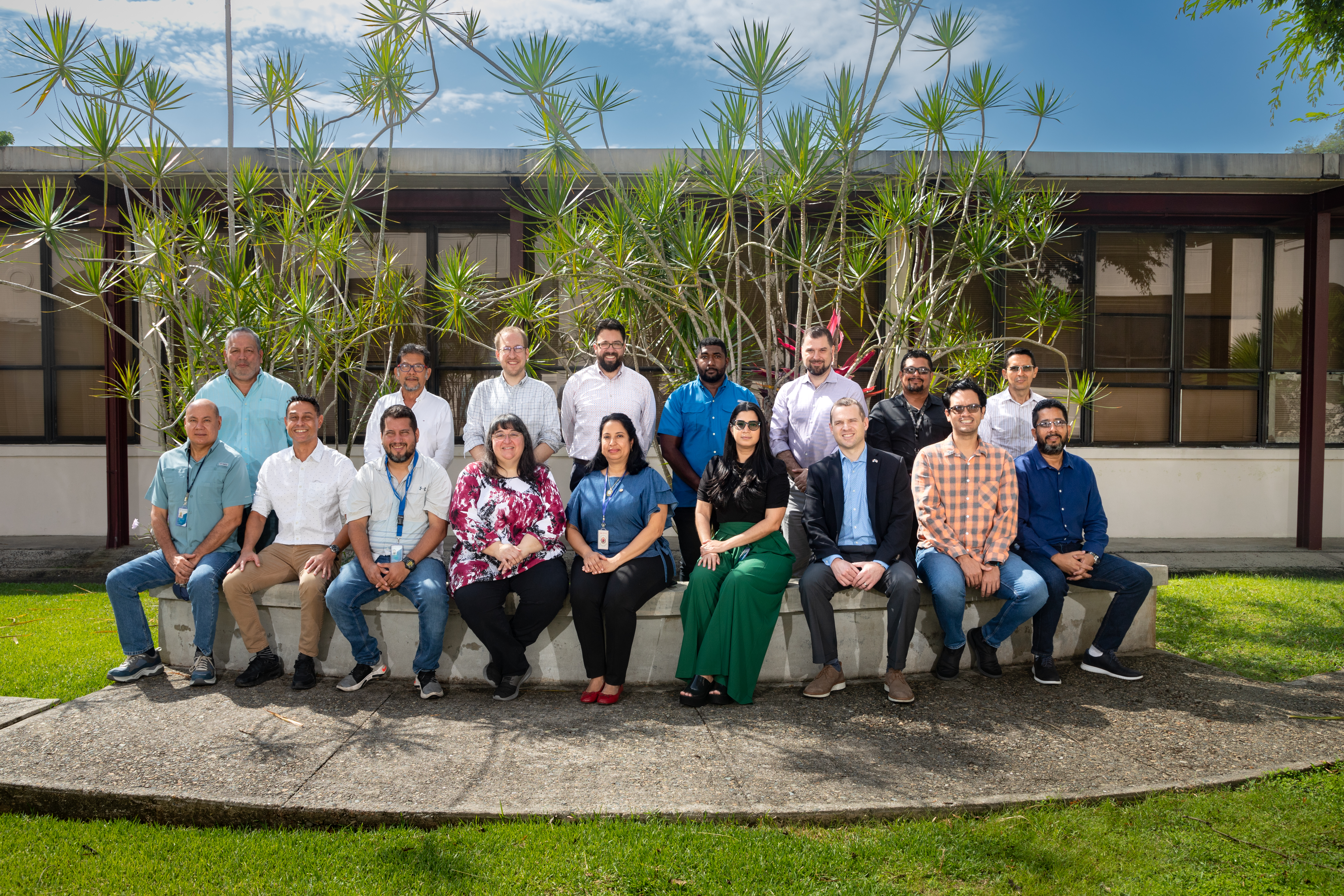
Finally, given the opportunity to visit such a notable water resources project, Evan and Joan scheduled some time between their arrival and the first day of class to see the Panama Canal Visitor Center at the Miraflores Locks and watch a large petrochemical tanker and vehicle carrier ship pass through the locks (Figure 5), as well as visit the Panama Canal Museum to learn more about the history of the canal project.
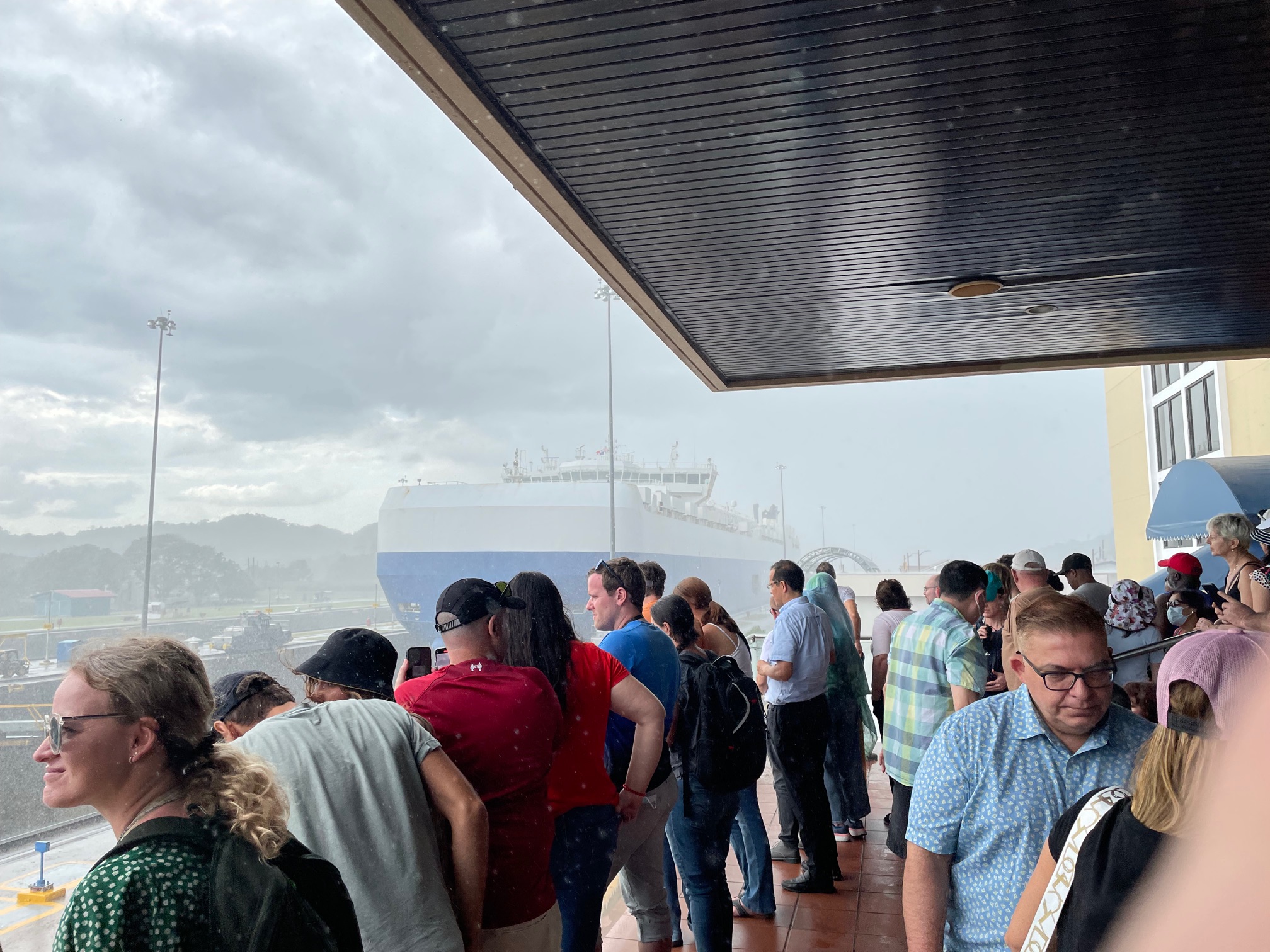
Last Modified: 2023-06-08 12:54:45.321